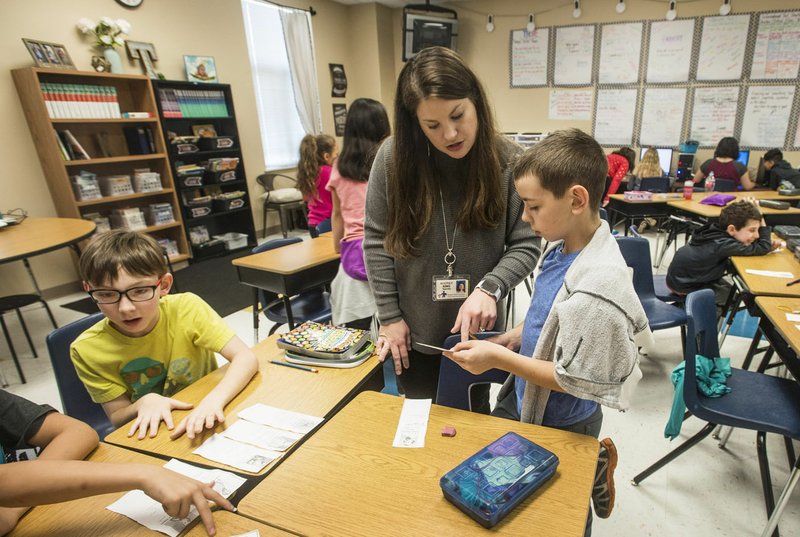ROGERS — The School Board unanimously voted Tuesday to ask voters in May for a property tax increase of 3.5 mills to build two elementary schools.
The proposal would generate $35 million in bonds to be sold to pay for the schools, Superintendent Marlin Berry said. The proposal also provides more money for the district to put toward technology, renovation of older campuses and for safety and security improvements, he said.
“I think it’s exciting we at least get to make this proposal to our community,” Berry said. “We will educate the community. They will tell us, ‘Yes,’ or, ‘No.’”
School Board members met last week to consider how much of an increase to seek within a range of 2.9 mills and 4.2 mills, though they didn’t come to a consensus until Tuesday’s meeting. The higher millage would have been necessary had the proposal included a middle school.
Berry decided against a middle school, he said Tuesday.
He doesn’t think the district will need to look at a new middle school for three to five years and growth in the sixth through eighth grades is manageable.
Board members on Tuesday said they thought the proposal provided a compromise.
“I feel very comfortable with this middle road,” School Board President Kristen Cobbs said. “I wasn’t quite there with the middle school, especially not knowing the need.”
A 6-mills increase approved by voters in 2003 has provided money over the past 14 years for Heritage High School, three new elementary schools and for New Technology High School.
“That shows a reluctance to be frivolous in how we spend taxpayer money,” Cobbs said.
An additional 3.5 mills would raise the district millage from 38.4 mills to 41.9 mills, according to information compiled by Jake Haak, the district’s chief financial officer.
For the owner of $100,000 home, the millage increase would raise school property taxes by $70, Haak said.
The millage increase would provide the district with an estimated $5.83 million annually, with $1.29 million for the first elementary school, $1.37 million for the second elementary school, $835,334 for district technology and $2.34 million for other needs, including renovation, safety and security, according to the information from Haak.
The district has land in the southwest part of the district near Garrett and Bellview roads for one elementary school, Berry said.
A location hasn’t been identified for a second elementary school.
The district’s operating budget pays for routine updates to air-conditioning units and roofs, but the additional money for renovation will help extend the life of some of the district’s older campuses, Berry said.
The money for technology would provide for updates to computers and go toward buying instructional tools and computer programs used by students, Berry said.
While schools are safe, Berry is interested evaluating lighting of campus parking lots and entrances and providing appropriate security while children are in schools and on playgrounds, he said.
Rogers has experienced an unexpected enrollment spike this school year, forcing the board to evaluate its facility plans, district officials have said. Enrollment at the elementary school level — kindergarten through fifth grade — has grown by more than 330 students since the start of the 2015-16 school year.
Grimes Elementary School has just under 480 students in kindergarten through fifth grade, Principal Susan Grimes said. She added a fourth class of third-graders this school year, she said.
“We don’t have any open classrooms,” she said.
Millage history
The last time the Rogers School District received a millage increase was in 2003, when voters approved six additional mills to bring the total to 39.5. Since then the rate has been rolled back 1.1 mills to 38.4.
Source: Staff report
Brenda Bernet can be reached by email at bbernet@nwadg.com or on Twitter @NWABrenda.
